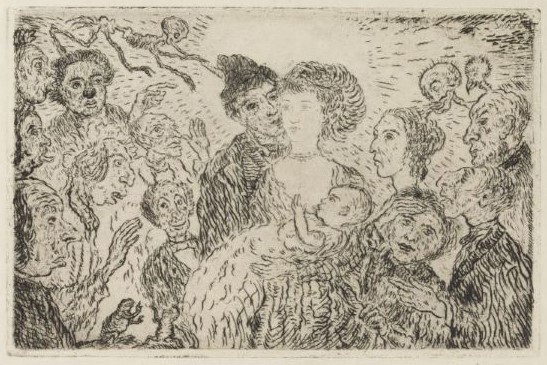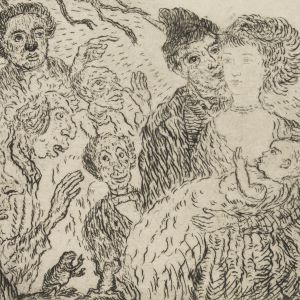Owing
to his dismissal of convention, use of the aesthetic of ugliness, simplified
colour scheme and the provocative nature of his themes, the Belgian painter
James Ensor (1860–1949) became a direct forerunner of Expressionism and modern
art in general. Ensor’s inclination to planar abstraction of forms was aptly
interpreted through the print medium that represented the black-and-white
antipole to his painting oeuvre. In a set of etchings, published in 1904, he
grasped the classical subject of the Seven Deadly Sins, though with an
originality of his own that rejected the traditional ways of visual
represention of this theme.
The Deadly Sins of James Ensor
National Gallery Prague - Trade Fair Palace, Dukelských hrdinů 47, Praha 7
February 15, 2022 - May 15, 2022
 James Ensor, Závist, 1904 |
The Deadly Sins of James EnsorNational Gallery Prague - Trade Fair Palace, Dukelských hrdinů 47, Praha 7February 15, 2022 - May 15, 2022
Curator: Petr Šámal
National Gallery Prague - Trade Fair Palace |


